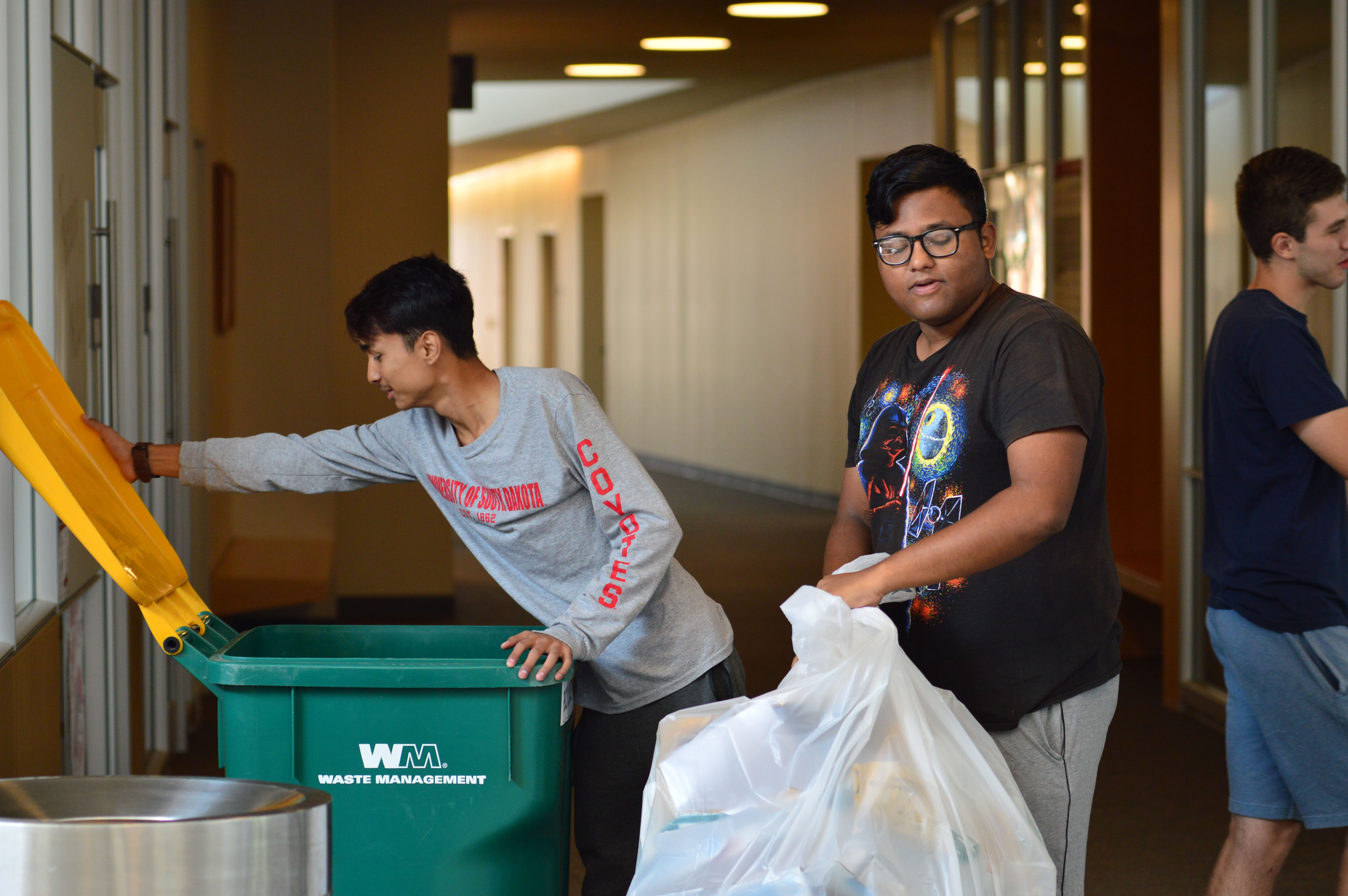
USD switches to single stream recycling
USD has switched to single-stream recycling over the summer and is looking at expanding the current recycling program.
The university started a pilot recycling program in 2016 and has been taking baby steps towards a campus-wide program since then. The most recent advancement has been changing waste collection companies.
Instead of a multi-stream system, where every type of recyclable needs to be sorted out by university employees, USD has switched to a single-stream system with Waste Management. Scott Pohlson, the Chair of the President’s Committee on Sustainability said switching to Waste Management has many perks.
“Waste management took over all of our refuse. So they do the trash and junk removal, and then we partner with them on recycling,” he said. “This switch has saved so much time.”
Right now the system runs off of student workers. Hadi Hindieh, a sophomore human resources major, and Ritesh Ray, a second-semester biology major have been working on recycling with Pohlson throughout the summer.
“What we (used to) do in recycling is we go around the university in the main core buildings and we separate the plastic from the papers,” Hindieh said. “But with the new waste management system we have been working with any type of plastic or any type of paper is recyclable. It all goes in one bag and then goes in.”
Ray said the new system with using a skip bin hire Sunshine Coast has cut down on the hours it takes to collect all the recycling.
“On an average day we used to work for like three hours now it has been reduced to two hours,” Ray said.
Currently, the recycling program has been implemented in Delzell, Slagle Hall, Belbas, the Law School, The Munster University Center, the DakotaDome and the Sanford Coyote Sports Center. However, the program will start to expand with the time saved from switching to a single stream system, Pohlson said.
“The idea of this is from an efficiency standpoint,” he said. “They are still going to get their hours and we’re expanding to more buildings.”
Pohlson said the new system allows for more items to be recycled as well.
“Before they really just took ones and twos and now they’ll take three, four, five, six, seven, eight,” he said. “So that is a big difference for us too. For instance, the cups at the dome for games, the coyote cups, are sevens or fives… but even like for the now called the community picnic (during welcome week) the plate, if you scrape the food off is recyclable. So before none of that was recyclable. It was all trash; the only thing you could really recycle was the water bottles.”
One challenge with the recycling program, in general, has been figuring out how to explain the program to the USD community.
“We do have signage but we are still trying to figure out the communication piece of it,” Pohlson said.
Once the program starts to spread to more locations on campus Pohlson said the committee will start to look at diversion techniques.
“The straw thing with Starbucks is a big deal, while that’s kind of kicked off into something where Aramark says ‘hey, we can make straws optional.’ so that’s one of the things we are going to talk about is like a Chic-Fil-A is asking if someone wants straws or just putting staws out and letting people use them if they want to,” he said.
Hindieh said one solution could even be as simple as giving every student a metal USD straw.
“Because once you see a turtle with a straw stuck in its nose, you will never use one again,” he said. “Imagine if you were in the turtle’s shoes.”
Pohlson added that his favorite part about the way the program has evolved has been getting to brainstorm solutions with students that are passionate about recycling.
“The best thing about this is getting to work with student workers. That’s the cool part about this program is the workers are doing it because they have a passion for it,” he said.


